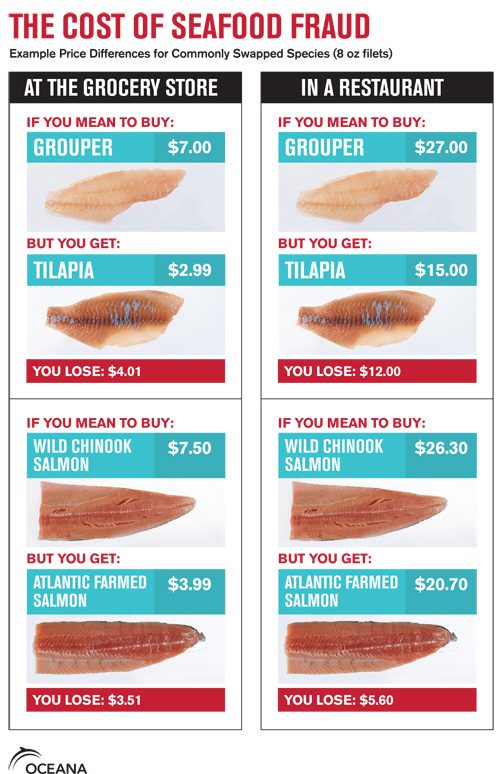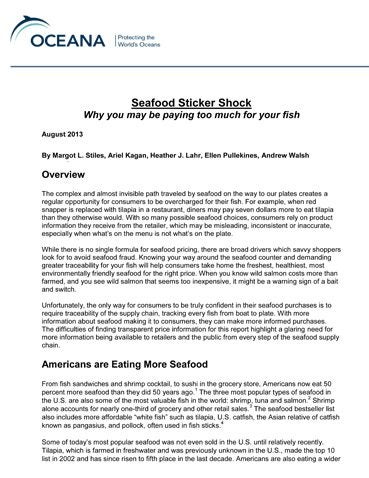Report | August, 2013
Seafood Sticker Shock: Why you may be paying too much for your fish
The complex and almost invisible path traveled by seafood on the way to our plates creates a regular opportunity for consumers to be overcharged for their fish. For example, when red snapper is replaced with tilapia in a restaurant, diners may pay seven dollars more to eat tilapia than they otherwise would. With so many possible seafood choices, consumers rely on product information they receive from the retailer, which may be misleading, inconsistent or inaccurate, especially when what’s on the menu is not what’s on the plate.
While there is no single formula for seafood pricing, there are broad drivers which savvy shoppers look for to avoid seafood fraud. Knowing your way around the seafood counter and demanding greater traceability for your fish will help consumers take home the freshest, healthiest, most environmentally friendly seafood for the right price. When you know wild salmon costs more than farmed, and you see wild salmon that seems too inexpensive, it might be a warning sign of a bait and switch.
Unfortunately, the only way for consumers to be truly confident in their seafood purchases is to require traceability of the supply chain, tracking every fish from boat to plate. With more information about seafood making it to consumers, they can make more informed purchases. The difficulties of finding transparent price information for this report highlight a glaring need for more information being available to retailers and the public from every step of the seafood supply chain.
Supplementary Content:

The Cost of Seafood Fraud (Inforgraphic)




